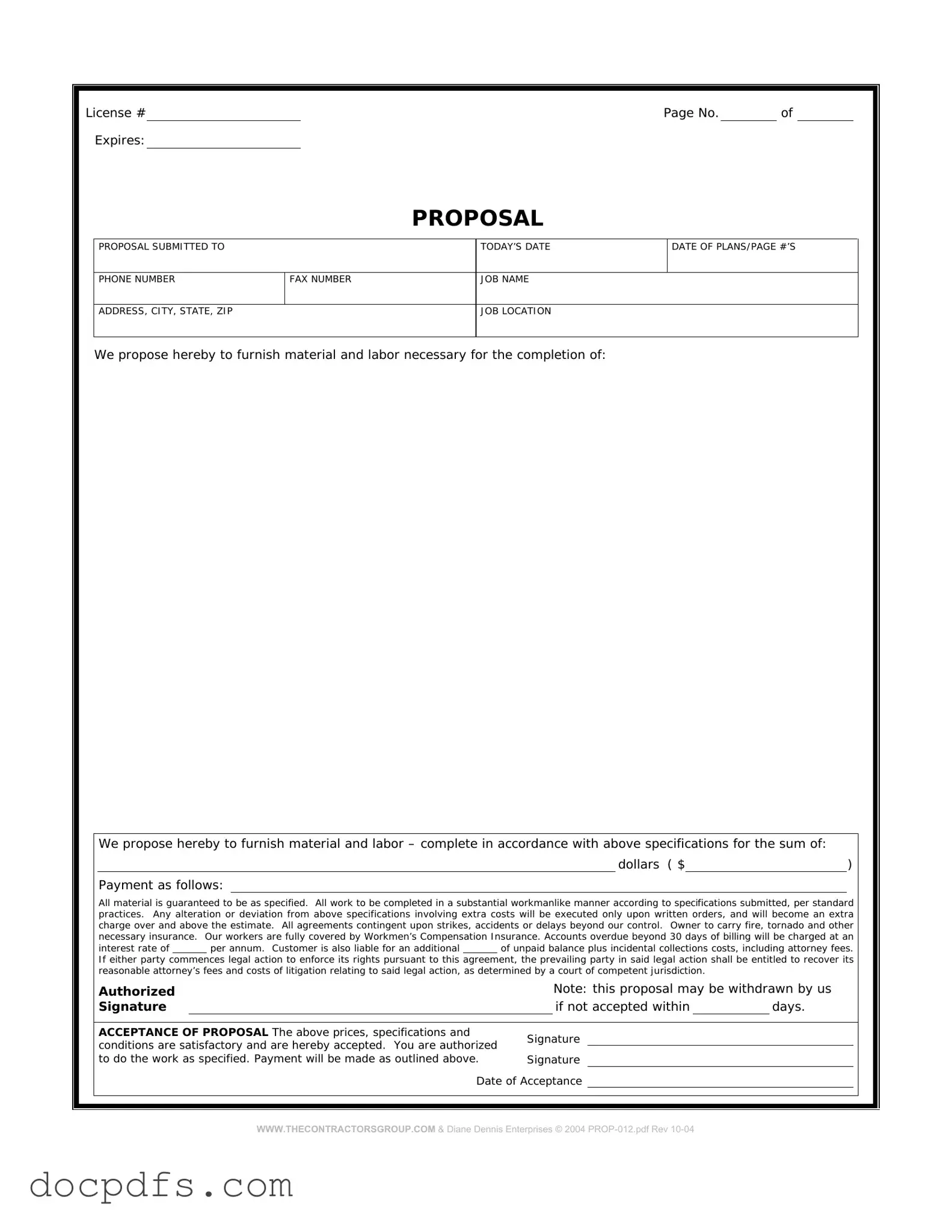A Construction Proposal Form is a document used by contractors to outline the details of a proposed construction project. It includes information about the scope of work, estimated costs, timelines, and other essential details. This form helps clients understand what to expect from the contractor and allows for informed decision-making.
This form is important because it serves as a clear communication tool between the contractor and the client. It helps set expectations and provides a written record of what has been agreed upon. Additionally, it can protect both parties by outlining responsibilities and reducing misunderstandings.
The Construction Proposal Form usually includes:
-
Project description
-
Scope of work
-
Estimated costs
-
Timeline for completion
-
Payment terms
-
Any necessary permits or approvals
-
Contact information for both parties
The contractor or construction company typically completes the form. However, clients should also be involved in the process to ensure that all their needs and concerns are addressed. Collaboration can lead to a more accurate and satisfactory proposal.
How can I ensure that my proposal is accurate?
To ensure accuracy, consider the following steps:
-
Conduct a thorough assessment of the project site.
-
Gather input from subcontractors and suppliers.
-
Review similar past projects for cost and timeline estimates.
-
Communicate openly with the client about their expectations.
After submission, the client will review the proposal. They may ask questions or request changes. Once both parties agree on the terms, the proposal can be signed, and work can begin. It is essential to maintain open communication during this phase to address any concerns promptly.
Yes, modifications can be made after submission if both parties agree to the changes. It is important to document any adjustments in writing. This ensures clarity and maintains a record of what was agreed upon.
What should I do if I have questions about the proposal?
If you have questions, reach out to the contractor directly. They can clarify any details and address your concerns. Open communication is key to ensuring that both parties are on the same page and comfortable moving forward.
A Construction Proposal Form can be legally binding if it is signed by both parties and meets the necessary legal requirements. However, it is always advisable to consult with a legal professional to understand the implications fully. This ensures that all parties are protected and aware of their rights and responsibilities.
